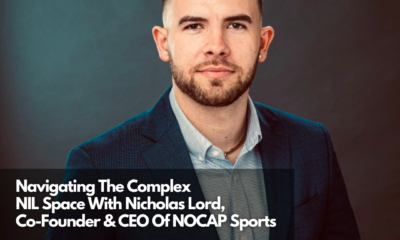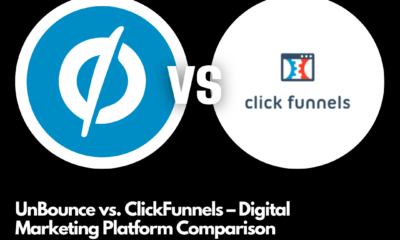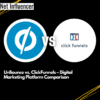Technology
UMI Games New President Tom Parry Explains Why Brands Can’t Ignore Free-To-Play Gaming Platforms

“The introverts are finally having their day,” declares Tom Parry, the newly appointed President of Whalar Group’s gaming division, UMI Games.
In a world where extroverts have long dominated social media, the industry veteran sees gaming platforms as the next frontier for creative expression and brand engagement.
His vision? To transform how companies connect with the elusive Gen Z and Alpha audiences — not through flashy influencers, but through the immersive worlds of Fortnite, Roblox, and Minecraft.
As brands scramble to understand this shift, Tom and UMI Games are already building bridges between marketing budgets and millions of young gamers.
In an exclusive interview with Net Influencer, Tom details his vision of creating immersive brand experiences within gaming environments and integrating brands into popular user-generated content.
A Decade in Digital
A marketing maverick with roots in London’s entertainment industry, Tom brings over a decade of experience in digital and social media marketing to his new role.
“I started in marketing in 2008 in London, specifically around entertainment, marketing, film, TV, etcetera, with a bit of an adjacent into gaming,” he shares.
Tom moved from London to Los Angeles about six years ago to specialize in social media and the influencer/creator space. He saw parallels between the current gaming industry and the early days of social media.
“Seeing these free-to-play online gaming platforms such as Fortnite begin to build a global audience and ultimately a hard-to-reach new gen audience was a mirroring of what I saw with social media in the early part of the 2000s,” Tom tells us.
In August, he was appointed President of UMI Games, one of Whalar Group’s six divisions.
UMI Games is at the intersection of brands and creators in the gaming space, focusing on free-to-play online platforms.
The company helps brands reach Gen Z and Gen Alpha audiences through authentic collaborations with game creators.
Bridging Brands and Creators in Gaming
UMI Games is tapping into the user-generated content (UGC) gaming space, which has exploded with the availability of open-source developer tools.
“There’s now over 180,000 games just on Fortnite alone. UGC was created with huge built-in audiences, millions of players a day, and tens of millions of monthly active users,” Tom notes.
As UMI Games’ chief, Tom aims to unlock opportunities for creators while helping brands navigate the gaming ecosystem.
His vision aligns with Whalar’s mission to “liberate the creative voice” in the creator economy.
Strategic Balancing Act
In his new role, Tom faces the task of balancing creative leadership with strategic business development.
His approach centers on understanding both brand objectives and creator perspectives.
“It’s listening to where brands are, where they want to get to, and it’s understanding, as importantly, where the creators are coming from on an individual level, what they’re willing to collaborate on,” Tom explains.
The company’s strategy involves combining marketing expertise with gaming talent.
“We’re trying something different on this one, but our mission here is liberating the creative voice,” Tom Says. “This idea of marketing meets gaming and that combination.”
Translating Brand Objectives into Gaming Success
One key challenge UMI Games faces is educating brands about the potential of gaming platforms.
Tom notes, “We are often shocking people when we speak to them about time spent on these platforms versus social media.”
To overcome this hurdle, the company emphasizes the immersive nature of gaming activations.
“These are players within branded experiences,” Tom explains. “It’s almost along the lines of experiential experience.”
He parallels traditional experiential marketing by noting, “We have budgets [for] these experiential experiences that will reach thousands, maybe just hundreds of people. But the noise and the awareness we will generate across media because of this event and the earned media will be worth the investment.”
UMI Games offers brands two main routes for engagement: creating new branded experiences and integrating into existing popular UGC games.
Gaming: The Next Frontier of the Creator Economy
Tom sees the gaming industry as a pivotal force in shaping the future of the creator economy.
“The gaming creator economy and generally the gaming space, particularly the online free-to-play gaming platforms, have grown up in the shadow of social media,” he explains.
The exec notes that these platforms boast hundreds of millions of monthly active users and a strong ecosystem, including streaming and social media elements.
Tom highlights the emergence of game creators as a significant trend.
“What these new platforms, Fortnite, Roblox, Minecraft are doing is unlocking tools for game developers to build these super successful games with millions of players a day, bring their creativity, and therefore create new experiences for players to play in,” he says.
UMI Games employs two key strategies to connect brands with younger audiences in this space.
The first involves creating bespoke brand experiences within gaming platforms, which Tom describes as “very immersive experience[s]” that generate awareness and earned media.
The second strategy focuses on integrating brands into UGC games, which Tom says is “all about reach as well, but it’s about engagement and engaging with the community of gamers.”
He emphasizes the importance of authenticity in both approaches, stressing the need for close collaboration with game creators to ensure brand integrations resonate with players.
Measuring Success and Showcasing Innovation
Tom advocates tailoring success metrics to specific campaign objectives.
“The two opportunities and the different objectives I mentioned have different KPIs, so we activate and execute based on those,” Tom explains.
For brand experiences built within gaming platforms, UMI Games focuses on in-game metrics such as player numbers and time spent in the game.
Tom notes, “We can deliver awareness and engagement metrics in the game and then promote the game through creators across social media and streaming platforms.”
The company measures impression levels, engagement rates, and player interactions with ad formats when integrating brands into existing UGC games.
“We can measure proximity to your avatar, billboards, or product placement. We can measure how many players interact with that,” Tom tells us.
Sharing a Case Study
To illustrate UMI Games’ approach, Tom shares a recent campaign for Sky Broadband, a UK telecom company.
The project, launched in collaboration with esports company Guild Esports, involved creating a standalone Fortnite game called Sky City FFA (Free For All).
“We brought speed into the city,” Tom explains. “It was important in this game. We have this across several ways: speed rails that power players around the environment, booster pads, all these pickup items.”
The game aimed to convey Sky Broadband’s message about speed and connectivity while providing an engaging experience for players.
The campaign’s success was evident in its quick adoption. “We had over 20,000 players in the first 24 hours. We’re now over 100,000 players in the game,” Tom reports.
To further boost engagement, UMI Games partnered with TheBoyDilly, a top Fortnite UGC game creator, to place portals in his popular game that direct players to Sky City FFA.
Tom sees this campaign as exemplifying UMI Games’ dual approach: “This really encapsulates both sides of the opportunity in terms of building new games and brand storytelling in immersive, engaging ways, and also driving reach and engagement with a large player base by partnering with creators of the popular UGC games.”
The Future of Gaming and Brand Integration
Tom sees the development of gaming platforms as a key driver of change in the creator economy.
“The tools that they continue to develop for creators is an ongoing evolution,” he notes, highlighting the empowerment of game creators as a significant trend.
Tom draws an interesting parallel between social media and gaming: “Social media was empowering for extroverts and gave rise to more of them. And what we see happening in gaming is the introvert finally having their day.”
However, challenges remain in integrating brands into gaming environments.
Tom stresses the importance of education, stating, “It’s on us to talk the language to the brands that they understand that ladders back to what they’re doing more widely.”
Tom advises an open-minded approach for brands looking to engage younger audiences through gaming platforms.
“These communities are very passionate and have strong followings. It’s about meeting those in that community in the right way and the right places,” he explains.
UMI Games is a bridge between brands and creators, leveraging marketing expertise and gaming knowledge.
Tom expresses enthusiasm for this role, saying, “We love every day, we love every challenge. The more brands we speak to, the more we learn, and the more creators we partner with, the more fantastic we feel for allowing these individuals to express themselves creatively.”
Ultimately, Tom sees UMI Games’ mission as part of a larger goal to “liberate creative voices” in gaming and brand integration.





















